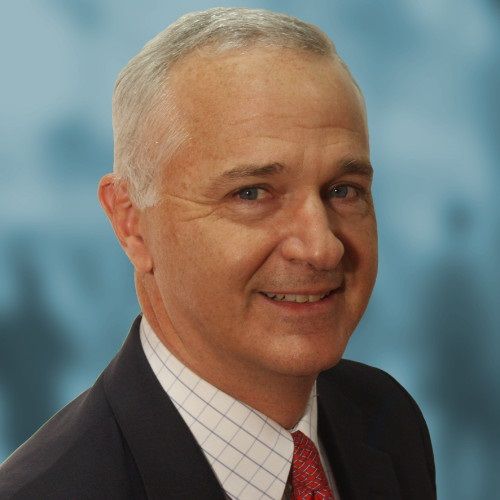Article
The meaningful use 2 challenge
Achieving stage 2 attestation requires staff cooperation and help from your EHR vendor.

Is meaningful use Stage 2 (MU2) obtainable for most small-practice physicians? Perhaps not, as evidenced by the government’s decision to delay implementing MU2 and allow providers to attest using 2011-certified software. As 2014 moves beyond the halfway point, the answer may hinge on what your practice does to prepare for attestation and the relationship you have with your electronic health record (EHR) vendor.
MU2 challenges vendors, providers
Although the Centers for Medicare and Medicaid Services (CMS) delayed the start of MU2 attestation for a year, 2014 is proving to be a challenging deadline for many EHR vendors and their clients.
Medicare-eligible providers attesting for MU2 now must report on a total of 20 objectives-17 core objectives and three of six menu-set objectives-as well as nine of 64 approved clinical quality measures (CQMs), during a fixed quarter of the calendar year.
Early results show that MU2 attestation is off to a tepid start. As of May 1, CMS reported that only 50 eligible professionals and four hospitals had attested for Stage 2 in the 2014 reporting year.
Michael Zaroukian, MD, PhD, FACP, vice president and chief medical information officer for Sparrow Health System, says some practices are struggling due to their vendors’ inability to provide a certified product in a timely manner, while other physicians may not have anticipated the impact that Stage 2 would have on workflow.
While there were no “big surprises” in Stage 2, Zaroukian says, “perhaps some of the vendor challenges in getting their software ready to meet the requirements and the increased emphasis on information exchange is more than practices or vendors were expecting.”
Zaroukian, who works in two practices that use different EHR vendors, says his own experience has been mixed, with one practice experiencing a “comparatively smooth path” toward attestation while the other is being challenged by a vendor slow to upgrade its EHR.
Until earlier this month, all practices were required to use a 2014-edition certified EHR to qualify for incentive payments no matter if they are in MU1 or MU2, but that vendor certification was a roadblock for many practices. As of May, about 115 vendors representing 220 products had received full 2014 ambulatory certification. That contrasts with the 1,932 complete products certified for 2011.
If a vendor promises to be certified by a specific date, Rosemarie Nelson, a medical practice consultant with MGMA Healthcare Consulting Group, recommends asking for a “letter of agreement” from the vendor to cover a practice’s loss of incentive money or penalty in a subsequent year because of an inability to attest in 2014.

Mark Anderson, chief executive officer of AC Group consultants in Montgomery, Texas, points out that CQM selection can derail providers because few EHRs are certified for all 64 CQMs.
“You need to look at the CQMs and say, ‘These are the ones that make sense to me,’ and then see if your software vendor can actually report on those,” he says. “Most vendors only do 10 or 15 of them.”
Establishing a point person in the practice to monitor vendor progress in providing functionality is essential.“You have to be proactive and diligent and never assume the vendor is going to take care of it for you even when they say they will,” Nelson says. “If you are waiting on somebody else to do something, then you need to monitor that more than you would a fever of 102 with your child.”
The federal government did throw providers a lifeline earlier this year when it created a hardship exception to avoid the upcoming Medicare payment adjustment for the 2013 reporting year. The exception, however, is not automatic. (Payment adjustments for the program will begin on January 1, 2015, for eligible professionals.)
Mary Griskewicz, MS, FHIMSS, senior director of health information systems for the Healthcare Information and Management Systems Society, recommends filing your application early if you have a “documented reason” from your vendor showing you are unable to successfully demonstrate MU due to circumstances beyond your control.
Ultimately, the rocky EHR landscape may mean some doctors will have no alternative but to switch vendors because the product they installed cannot keep pace with the MU timeline and requirements.
“It’s a difficult choice to make, but you have to look at the dollars and cents,” says Rachelle Blake, PA, MHA, founder and chief executive officer of Omni Micro and Omni Med Solutions in San Francisco. “Does it make sense to change to a more expensive, more comprehensive EMR, or should you continue throwing money into a vendor you’re having to pay for each little change or where you have to go through 10 interfaces to meaningfully use the system?”
Not all vendors have struggled equally to provide doctors with a 2014 certified product. Todd Rothenhaus, MD, chief medical officer for athenahealth, which was able to obtain 2014 certification for its cloud-based athenaClinicals EHR last year, says successful attestation requires a “we do-you do” relationship between vendor and client.
Rothenhaus says two MU2 core measures -having patients view, download and transmit their health information and use secure electronic messaging to communicate clinically with the practice-are among the biggest difficulties for providers in the early going. In response, the company recently added functionalities to athenaCommunicator, its patient communication service, that encourage patients to “view, download and transmit” their personal health information as well as to respond to secure post-visit email messages from their provider.
Rothenhaus is proud of athenahealth’s MU track record of 95.4% of participating physicians attesting successfully in 2013, but he acknowledges that Stage 2’s more challenging measures mean the “we-do” is not done.
“We’ve got a lot more work to do this year than we thought,” he says.
MU2 success strategies
Carol Choi, DO, physician consultant, NextGen Healthcare, suggests providers follow these best practices:
- Start as early as possible preparing for Stage 2
- Educate yourself on all Stage 2 requirements
- Make sure you have all the necessary interfaces and infrastructure installed to meet Stage 2 measures such as patient engagement, clinical information exchange and immunization registry reporting.
- Early on identify necessary clinical and administrative workflow changes
- Run reports regularly to monitor performance.
“You need your entire staff to collaborate and cooperate in terms of achieving MU Stage 2 requirements,” Choi says. “It‘s not simply a provider meeting some measures and reporting on it. It does have to be somewhat of a group effort.”
When workflow or other EHR issues crop up, MGMA’s Nelson says the vendor should be the first place a practice calls.
“The vendor knows where you have erred. They know where the opportunities are,” Nelson says. “Most vendors want to retain their clients. They are going to find ways to try to help.”
Establishing a solid staff-training program, a must at the onset of EHR implementation, remains a baseline for success during Stage 2. Supplemental training can take many forms, from vendor-supplied white papers, checklists and online modules to in-person assistance from vendors or consultants.
“Make sure you are getting the right supplemental training, especially if you are relatively new to EHRs,” Chittim says. “If you implemented an EHR with Stage 1 MU, there may be pieces of functionality you have never used before.”
Griskewicz also recommends participating in vendor user groups and connecting with other practices using the same EHR, steps that can alert providers to issues they may encounter.
Griskewicz maintains that doctors who experience the fewest difficulties understand that participating in MU means not simply mastering a new technology but “re-engineering their practice” with the goal of improving quality outcomes for patients.
Chittim goes one step further, arguing providers who “connect their objectives for MU” to a bigger goal, such as becoming a patient-centered medical home or participating in a pay-for-performance payment model, are the biggest winners.
“Physicians are in this business because they want to do good,” Chittim says. “Using MU as a stepping stone to doing something great is really effective.”
Jennifer Brull, MD, a family medicine physician in Plainville, Kansas, is confident her practice will successfully attest for Stage 2, mostly because her staff began preparing for the new standards months before her EHR vendor released its certified Stage 2 software. While a practice cannot dictate its vendor’s certification timeline, Brull says it can “make a plan for everything within their control.”
A solo practitioner who collaborates with nine other providers using eMDs’ EHR, Brull established a project team that planned for Stage 2 implementation and educated staff about the new requirements and higher thresholds for objectives such as patients’ online access to their health information.
“You may not know the exact workflow that is going to be different but you know–it’s clearly published–what the goals and objectives are,” she explains. “You can pull your staff in as part of a team and make sure they understand the changes. If you are barely meeting a threshold now, then chances are that is an area that needs work” in order to meet Stage 2 requirements.
Brull, who plans to attest in the third quarter, says her practice’s biggest challenge has been persuading patients to use the portal.
“People just don’t want to interact that way,” she says. “I don’t understand it. I love the portal. [As of March] when I ran my reports, I am at 38%, and I need 50%. That’s the one piece I’m worried about.”
Peter Basch, MD, medical director for Medstar Health’s ambulatory EHR and health IT policy, believes doctors can entice patients to use portals and secure online communication by educating them on the technology’s benefits, as they did when meeting the Stage 1 goal for e-prescribing.
Basch’s approach is to “make lemonade out of lemons” by developing strategies that make Stage 2 requirements a win-win for both doctor and patients. For example, doctors can boost their numbers for clinically relevant messaging by emailing pre-visit screening questionnaires and risk assessments to patients, who then submit their answers electronically.
“Think of it as a two-for, an experience where you are leveraging the MU requirement to shift the unpleasant work of a visit to what you should be doing, which is have the patient, where possible, enter his or her clinical information,” he says.

Rocky road ahead
Despite his optimism that MU is moving medicine in the right direction, Basch is not optimistic regarding Stage 2 attestations. He cites the medication reconciliation requirement, in which doctors must declare visits a “transition of care” to be counted, and the patient-specific-educational-materials measure, which uses a denominator based on a fixed percentage of patients, as potential problems for providers.
“I think there is going to be a higher failure rate for Stage 2 because there are more opportunities to trip up,” he says. “People will fail because they did in their minds what they thought was the right thing, but they didn’t understand how their vendor was mapping something.”
Providers also need to be prepared for MU audits, which can occur for up to six years after attestation. “Once you are audited, you potentially can be audited again because it’s truly random,” Griskewicz says. “Do not throw out your documentation even if you are audited once.”
Blake, meanwhile, says doctors need to make their voices heard as Stage 3 approaches. “Providers and practices need to speak up about where they’re having challenges and meeting roadblocks,” she says.





